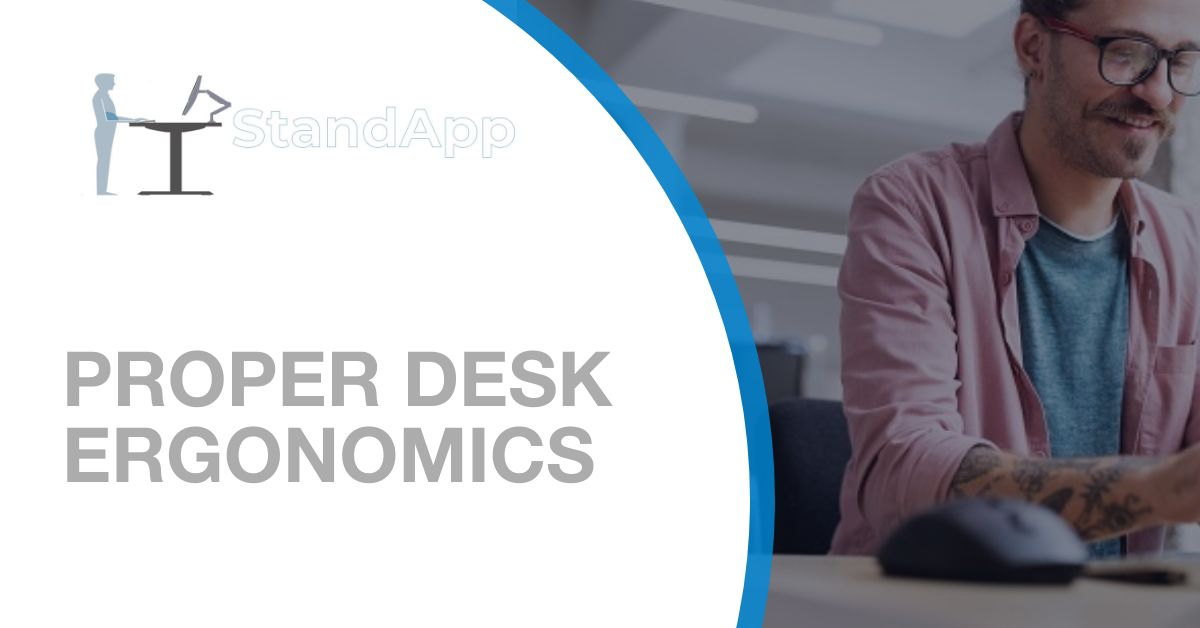
Posture Health: Guide to Proper Desk Ergonomics
Do you have desk ergonomics? If not, then it might be time to rethink your desk setup. There are a number of different desk setups that will help you with desk ergonomics. For example, a standing desk is a great option for people who want to improve their desk ergonomics and avoid slouching while they work.
We have compiled all the information on desk ergonomics in this guide so that you can find out what works best for your needs.
Workplace Ergonomics
How you use your time at work is crucial to your health, particularly if you are an American who works 47 hours per week on average. Tennis elbow (inflammation of a tendon in the elbow) and carpal tunnel syndrome (a disease of the hand and wrist) can be prevented by employing correct workplace ergonomics.
To reduce your risk of back and neck discomfort as well as all associated issues related to lengthy periods of sitting, have a look at this guide, where we go through correct ergonomics for sitting and standing.

Standing
- Find the height that is most comfortable for you when standing. Don’t strain your back, wrists, or elbows by using the wrong height.
- The keyboard should be close to the body, positioned between hip-level and chest height, with the hands at or slightly below elbow height. This implies that the tabletop must be approximately hip level or lower. With a desk that has a distinct keyboard tray, this may be easier to achieve.
- Wrist position should be 170 degrees. The wrists should not be less than 170 degrees (also known as “claw hands,” which causes wrist strain).
- The proper distance between the eyes and the screen is roughly equal to or smaller than the size of the screen. So, if you have a 17-inch computer monitor, your face should be 17 inches from it. The display should be tilted 20 degrees backward.
- Your shoulders should be straight, not rounded forward.
- The head should be pushed back over the spine so that your ears would line up over your shoulders if someone looked at you from the side.
- A sturdy support might be placed on the floor for one foot. The ideal height for this footrest is 10% of your height. You should not hold any one posture for a long time while standing. You can also shift your weight from one leg to another, stretch, dance, do yoga poses, squat, perform calf raises and the like.
- No high heels and a comfy pair of shoes are required. Orthotics should be used by orthotic wearers.
- A desk is not only a workstation but also a place to place objects that you use the most frequently. Objects that you utilize less frequently should be the furthest from you.
- The mouse should be positioned near to the keyboard.
- A comfortable standing desk mat will assist to decrease tiredness.
- Use a leaning seat that makes a 135-degree angle between your trunk and legs. With this choice, you’ll want to have a footrest to keep your ankle at a 90-degree angle, or use a seat with a rounded bottom section that will retain the feet in the proper posture.

Sitting
- Elbows should be positioned at a 90-degree angle.
- Knees are positioned at a 90-degree angle.
- Torso is typically 90-100 degrees to the thighs.
- It’s also important to have the display at eye level and for the distance between the eyes and the screen to be roughly equivalent. So if you’re using a 17-inch monitor, your face should be 17 inches from it. For better viewing, turn the screen 20 degrees backward.
- Your chair should have optional-back support for lower-back comfort.
- Put your feet flat on the floor or rest them on a footrest.
- The most frequently used items should be within your reach. The farthest from you should be things that you use less often.
- The mouse should be close to the keyboard.
- Kneeling on one knee with your other leg in front of you, foot flat and knee bent at 90 degrees, is referred to as “half-kneeling.” It can be a significant change in postural position that enhances stability and core strength while maintaining good upper body ergonomics at a seated workstation by utilizing a cushion, rolled up towel or a mat.
- Optional – For lower back support in a chair. To keep your low back’s natural curve, enhance the lumbar support on your chair to a comfortable level. If you don’t have lumbar support or there isn’t enough, you can use a rolled-up towel.
Proper ergonomics at work can help reduce back and neck pain as well as make you more productive. You might not realize it, but the way your workplace is set up may be causing injury-inducing stress on your body. That desk you’re sitting at could be the culprit.
Tiredness and discomfort can be relieved by swapping out your desk for a standing desk or using an anti-fatigue mat to stand on while working. You would also want to utilize a leaning seat that makes a 135 degree angle between your trunk and legs, which will cause tension in the hip and hamstring muscles.



